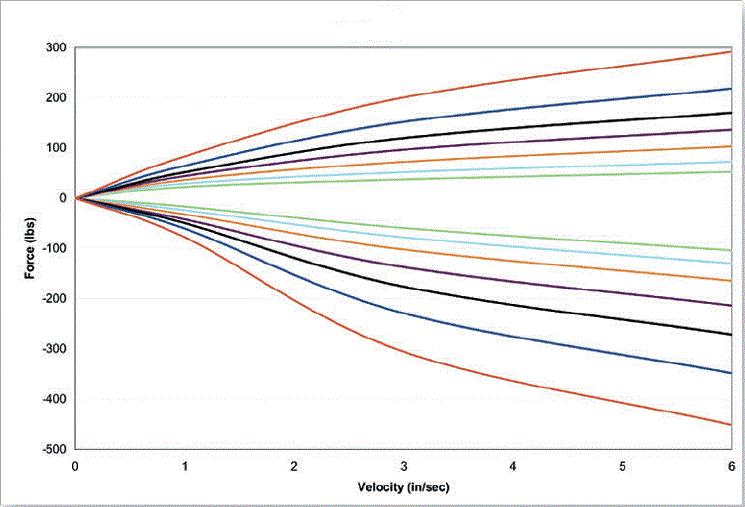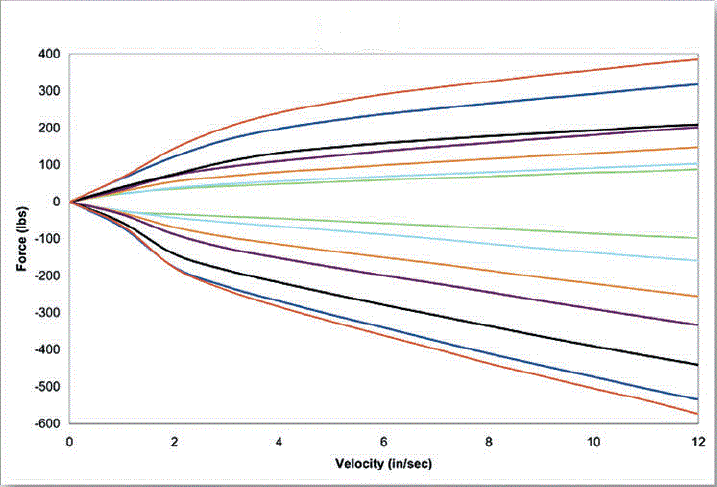I'm looking for some expert advice on matching shocks to springs for a custom coil-over build.
My spring rates are probably going to be 650lbs front and 475lbs rear.
The shocks I'm looking at have these two curve options, but I don't know what I'm looking at when I see a shock dyno graph.
Curve 1:

Curve 2:

They are not adjustable but can be valved from the factory in any combination of compression and rebound settings on the graphs. Closest to center (green lines) are setting 2 and extreme ends (red lines) are setting 8.
They also have a tuning kit available to re-build and re-valve them myself.
Which curve and then which settings for compression and rebound would be a good starting point for the above (650 lbs front/475lbs rear) spring rates?
Thanks,
D
My spring rates are probably going to be 650lbs front and 475lbs rear.
The shocks I'm looking at have these two curve options, but I don't know what I'm looking at when I see a shock dyno graph.
Curve 1:

Curve 2:

They are not adjustable but can be valved from the factory in any combination of compression and rebound settings on the graphs. Closest to center (green lines) are setting 2 and extreme ends (red lines) are setting 8.
They also have a tuning kit available to re-build and re-valve them myself.
Which curve and then which settings for compression and rebound would be a good starting point for the above (650 lbs front/475lbs rear) spring rates?
Thanks,
D
